Key takeaways
- Focal points are essential in photography, guiding viewer attention and evoking emotions through contrast, color, and light.
- Strong focal points enhance nature images by providing a clear focus that enriches the viewer’s experience and storytelling within the photograph.
- Techniques such as using natural light, simplifying scenes, and employing tools like macro lenses and tripods can effectively highlight focal points.
- Patience and curiosity in nature photography allow for the discovery of authentic moments, leading to compelling compositions and unique focal points.
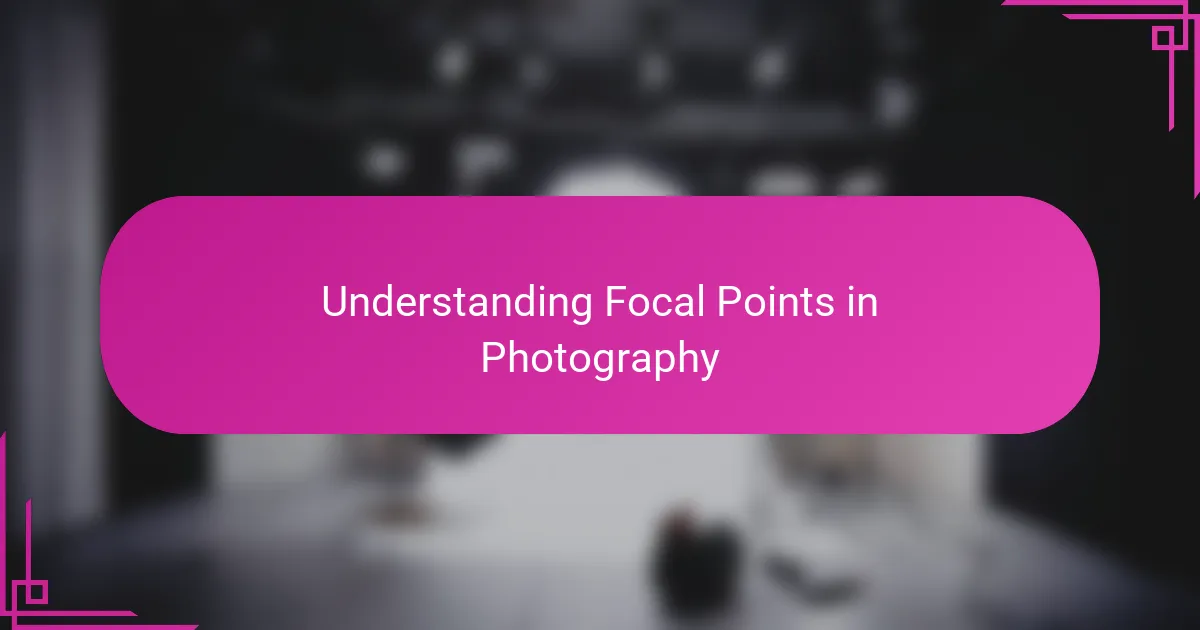
Understanding Focal Points in Photography
Focal points in photography are what naturally grab our eyes when we first look at an image. From my experience, they act like a visual anchor, guiding the viewer’s attention straight to the heart of the composition. Have you ever wondered why some photos just feel alive, almost as if they’re telling a story? That’s often the power of a well-chosen focal point.
When I started focusing on nature photography, understanding where to place that focal point changed everything for me. It’s not just about sharpness or detail—sometimes it’s the contrast, color, or even the way light falls that defines the focal spot. I remember capturing a lone flower on a misty morning; the way it stood out against the fog was a perfect example of how a focal point can create mood and emotion.
What’s fascinating is that focal points don’t have to be complicated or even centrally located. In fact, I’ve found that placing them off-center can add a sense of balance and intrigue. Do you look for patterns when composing your shots? For me, finding and emphasizing a focal point turns an ordinary scene into something truly captivating and meaningful.
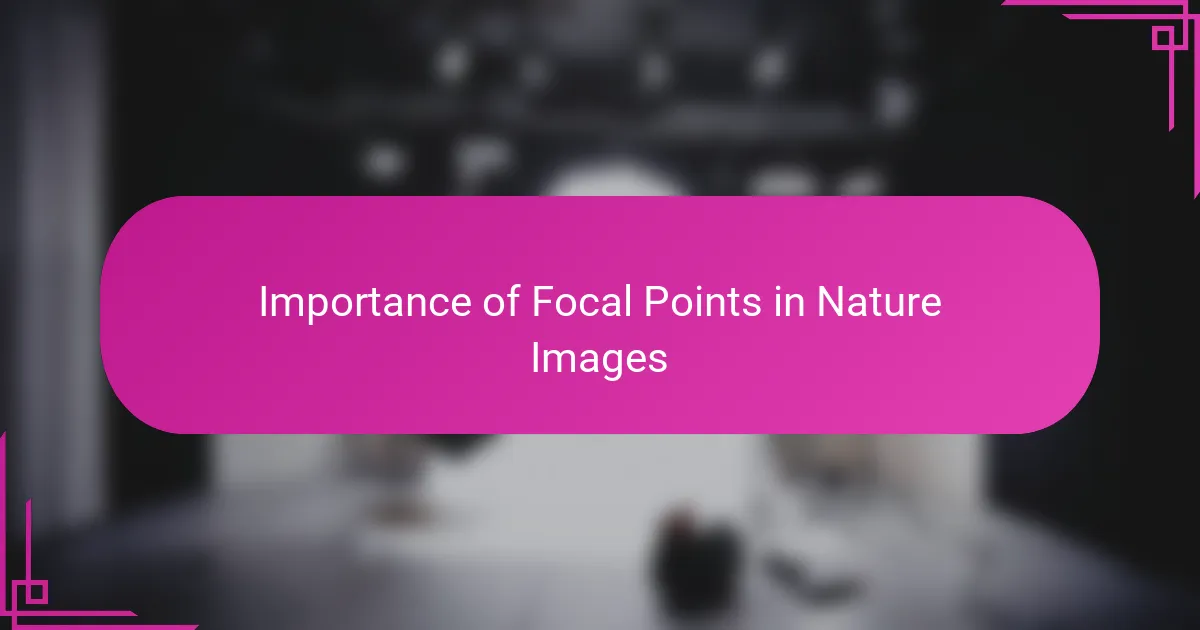
Importance of Focal Points in Nature Images
A strong focal point in nature images gives the viewer a clear place to rest their eyes, making the photograph instantly more engaging. From my experience, without a focal point, even the most beautiful landscape can feel flat or confusing—as if the story is missing. Have you ever felt drawn immediately to a single leaf or animal in a vast scene? That’s where the magic happens.
I recall a misty forest scene where a single sunbeam lit up a curled fern leaf; that contrast made my heart skip a beat. It wasn’t just about what was in focus—it was how that focal point sparked an emotional connection. In moments like those, the image stops being just a picture and becomes an experience.
Isn’t it interesting how a small detail can hold so much power in a giant landscape? Focal points create a sense of purpose in nature photography, helping me share the beauty that first caught my eye and inviting others to see the world through my lens.

Techniques for Identifying Focal Points Outdoors
Spotting focal points outdoors often starts with simply observing where your eye naturally falls in a scene. I’ve learned to stand still and really take in my surroundings, noticing elements like a burst of color or a shape that contrasts sharply with the background. Have you ever caught yourself drawn to a single bird perched against a vast sky? That’s usually a sign of a strong focal point waiting to be captured.
Lighting plays a huge role in revealing focal points during my outdoor shoots. Early mornings and late afternoons offer soft, directional light that can highlight certain features like the glimmer on a leaf or the texture of tree bark. I remember crouching down to frame a dewdrop catching the sunrise—something I might have missed if I hadn’t paid attention to how light defined that small detail.
Sometimes, it’s about simplifying the scene to find that focal point. I try to eliminate distractions either by changing my angle or using a shallow depth of field, so the subject really stands out. Have you experimented with isolating a single flower or rock by blurring the rest? It’s amazing how much more powerful the image feels when the eye is guided to just one point of interest.
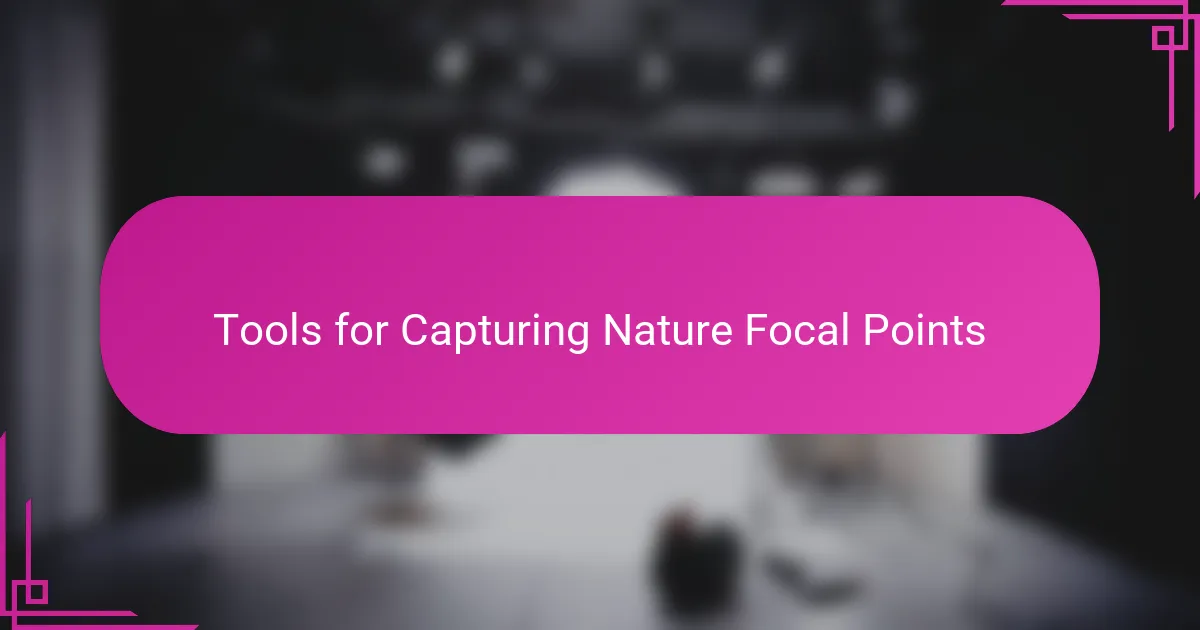
Tools for Capturing Nature Focal Points
Using the right tools can make all the difference when capturing nature’s focal points. I often rely on a macro lens to reveal tiny details like the intricate veins of a leaf or the delicate wings of a butterfly—details that might otherwise go unnoticed. Have you ever tried getting up close and personal like that? It’s like unlocking a hidden world.
Tripods have also become my trusty companions, especially during low light conditions like dawn or dusk. Holding the camera steady lets me capture sharp focal points without the blur that spoils the mood. I remember waiting patiently for the golden hour light to illuminate a lone mushroom, and using a tripod was key to freezing that perfect moment.
Filters, too, can play a subtle but powerful role. A polarizing filter helps reduce glare on water or wet leaves, which often enhances the focal point’s color and contrast. Have you ever been frustrated by reflections stealing the spotlight from your subject? A simple tool like that can transform your image and highlight nature’s finest details exactly how you saw them.
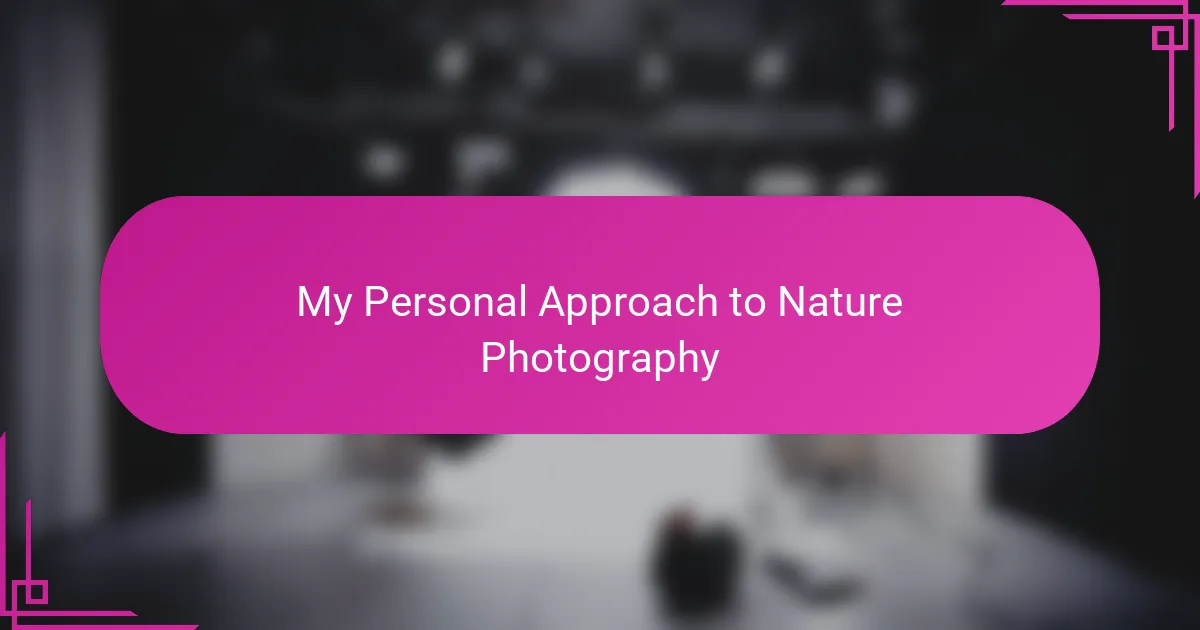
My Personal Approach to Nature Photography
Nature photography, for me, is a deeply personal journey where patience meets curiosity. I don’t just snap pictures; I wait for that moment when the scene reveals its soul, when light and subject dance perfectly to create a natural focal point. Have you ever felt that quiet thrill when everything aligns, and you know you’ve captured something truly authentic?
I tend to approach each shoot with a mindset of discovery rather than control. Instead of imposing my vision, I listen to what the environment is telling me—whether it’s the subtle glow on a leaf or the unexpected contrast of colors after rain. This openness has taught me to appreciate the small miracles nature offers and to let those moments guide my composition.
Sometimes, I deliberately slow down and let my eyes wander, resisting the urge to rush. That’s often when the best focal points reveal themselves—like a hummingbird caught mid-hover or the shimmer of a spider’s web in the dawn light. Isn’t it amazing how slowing down can make you see the extraordinary in the ordinary?
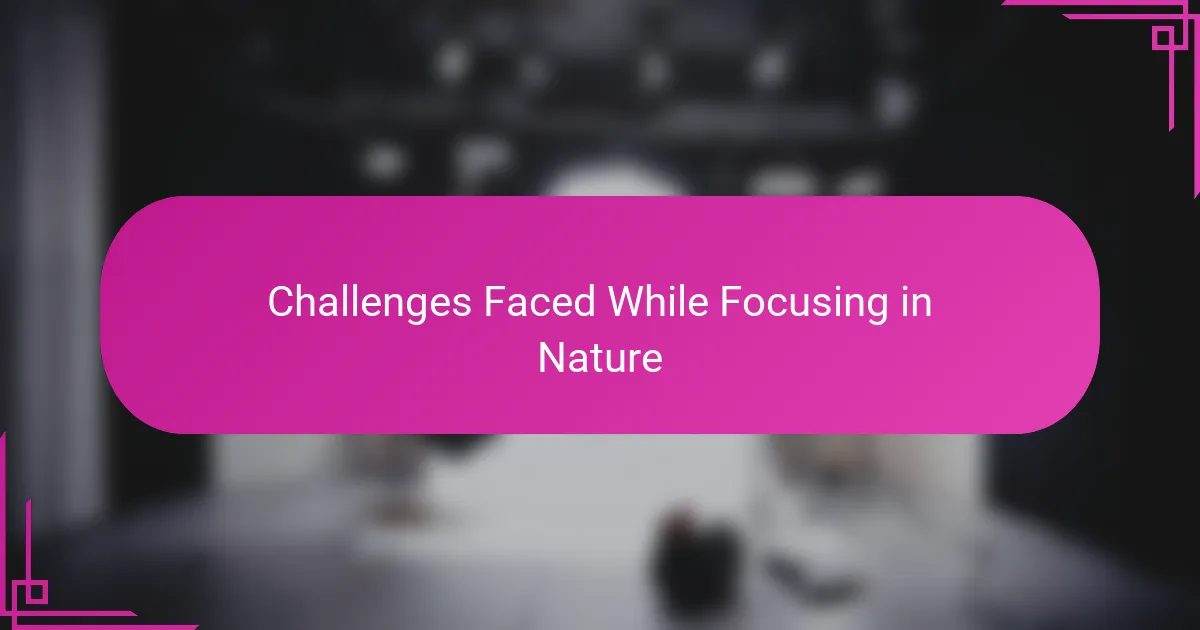
Challenges Faced While Focusing in Nature
Focusing in nature isn’t always as straightforward as it seems. I’ve often struggled with subjects that blend too well into their surroundings—like a camouflaged bird or a cluster of leaves moving in the breeze. Have you ever tried to lock focus on something that seems to hide in plain sight? It can be frustrating when your camera insists on picking the background instead of the main subject.
Another challenge I frequently face is dealing with unpredictable lighting conditions. Nature is beautiful, but light can change in an instant—clouds roll in, shadows shift, or harsh sunlight creates blown-out highlights. I remember once trying to capture a dewy spider web at dawn, only to have the delicate threads vanish under the strengthening sun. How do you keep the focal point from getting lost in those shifting lights?
Lastly, the technical side can get tricky outdoors. Sometimes shallow depth of field helps isolate the subject, but it also demands precision—one tiny slip and the focal point blurs right out of the frame. I’ve spent more than a few moments reassessing my focus points or re-composing shots to hit that sweet spot. It’s a delicate balance between artistry and patience, wouldn’t you agree?

Tips for Enhancing Focal Points Effectively
One tip I always come back to is using contrast intentionally—whether through color, light, or texture—to make your focal point pop. For example, I once photographed a bright red leaf against a dull forest floor, and that striking difference instantly drew the viewer’s eye. Have you noticed how a simple shift in surroundings can turn something ordinary into a magnetic subject?
Another technique I find invaluable is playing with depth of field to isolate the focal point. On a misty morning, I focused tightly on a single blade of grass, letting the foggy background melt into softness. That selective blur helped the tiny subject tell its own quiet story, free from distractions. Do you experiment with aperture settings to control how much of your scene stays sharp or fades away?
Finally, I recommend thoughtful composition—using visual lines or frames within nature to lead the eye toward your focal point. I remember spotting a sunlit path winding through the trees that naturally guided my gaze straight to a hidden deer. It made the whole image feel purposeful and alive. How often do you let the environment itself arrange your focal points rather than forcing them?